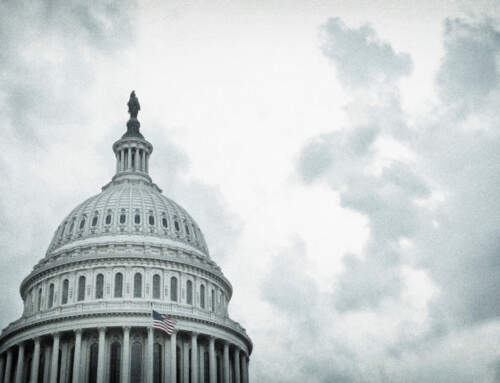For Immediate Release: December 21, 2022
R-CALF USA CEO Bill Bullard
Phone: 406-252-2516; r-calfusa@r-calfusa.com
Commentary by R-CALF USA CEO Bill Bullard
Please find below and attached R-CALF USA’s weekly opinion/commentary that discusses the beginnings of how live cattle prices have disconnected from retail beef prices. It is in three formats: written, audio, and video. Anyone is welcome to use it for broadcasting or reporting.
Where the Snowball Originated
Commentary by Bill Bullard, CEO, R-CALF USA
Here’s a winter analogy: It was so innocuous at its beginning: just a snowflake sitting on the top of the mountain surrounded by other snowflakes. But soon it was transformed into a snowball possessing both mass and weight and it began to make an impression.
Then, with its mass and weight increasing, the innocuous snowflake, now a snowball, broke free from inertia and began to move.
Momentum soon took over, and combined with gravity, acceleration, and all the while the snowball was interlocking with more snowflakes, growing exponentially in proportion. It careened down the mountain leaving nothing but tree carcasses in its wake.
And that, my friends, describes the broken U.S. cattle market…Okay, let’s explain:
This analogy tells us that a catastrophic outcome has a beginning…a beginning for which the outcome could not likely be foretold. Put another way, the huge problems of today all started small somewhere, and then additional forces interacted to produce what is, in this instance, a catastrophic outcome.
So, to solve today’s huge problem, which is today’s broken cattle market, we must trace it back to its beginning.
Today’s huge problem looks like this: The revenues a competitive marketplace once allocated to U.S. cattle producers have been hijacked and redirected back to the beef packers and retailers, causing a disconnect between cattle prices and beef prices. This is why consumers have been paying super-inflated beef prices while cattle prices have remained seriously depressed. Even with today’s increasing cattle prices, the spread between cattle prices and beef prices remains historically wide.
So now we know the disastrous outcome, but where did this snowflake, turned snowball, turned a destructive force originate?
Not long ago the four largest beef packers ate nearly all the smaller packers, and with their dominate market share, were positioned to control who had timely access to the market and who did not – they created market access risk for cattle producers. So here the snowflake was rather innocuous as no one knew what the outcome might be.
But at about that time, consumers began eating more beef, and did so for well over a decade. So, packers needed more cattle and were loath to deny timely market access to too many cattle producers. So, the snowflake just sat here for a while in its new landscape.
And while sitting there, the packers began experimenting with new ways to purchase cattle and they invented a new device that complimented their ability to exact market access risk on cattle producers. The new device was a formula contract – it removed cattle from the competitive cash market, committed those cattle to the packer, and contained no price. The price would be tied to whatever price the competitive cash market would determine sometime in the future. This rendered the competitive cash market a residual market – simply a tool for the packers to use to eventually price all their formula cattle. So here the snowflake transformed into a snowball and began making an impression.
And then the packers began exploiting market access risk by promising timely market access in exchange for a formula contract. In other words, to be assured of timely market access, producers had to commit their cattle through a formula contract that contained no price. So here the snowflake turned snowball began gaining mass and weight and began to move.
And then came the snowball’s momentum and acceleration. The beef packers began shifting more and more cattle out of the competitive cash market, which added more cattle to their formula contract hoards. This caused the competitive cash market to shrink, rendering it too thin to establish a competitive price.
A new report by Distinguished University Professor C. Robert Taylor, shows where today’s disconnect between retail beef prices and live cattle prices originated, and how. By relegating the competitive cash market a residual market, and then tying the formula contracts to that residual market to determine a price in the future, the packers transferred their risk of buying cattle to the residual market, and to anyone participating there.
Dr. Taylor’s report suggests that because the packers have now institutionalized the tie between formula contracts and the price determined in the residual, competitive cash market; and because the packers can move in and out of that residual, competitive cash market at will, depending on their formula contract commitments and anticipated beef demand, the residual, competitive cash market has become considerably risky, and that risk increases exponentially when the volume of formula contracts increase.
Dr. Taylor’s findings strongly support our long-standing contention that the packers’ use of these formula contracts is inherently unfair and anticompetitive.
We must fix this with legislation. Let’s not let this snowball do any more damage.
###
R-CALF USA’s weekly opinion/commentary educates and informs both consumers and producers about timely issues important to the U.S. cattle industry and Rural America.
R-CALF USA (Ranchers-Cattlemen Action Legal Fund United Stockgrowers of America) is the largest producer-only trade association in the United States. It is a national, nonprofit organization dedicated to ensuring the continued profitability and viability of the U.S. cattle industry. Visit www.r-calfusa.com or call 406-252-2516 for more information.





